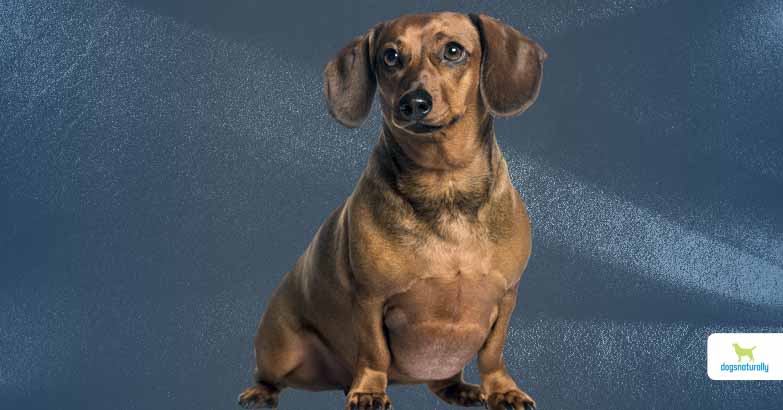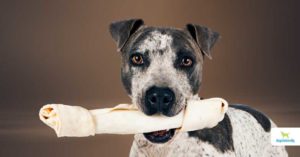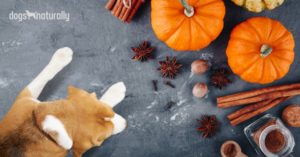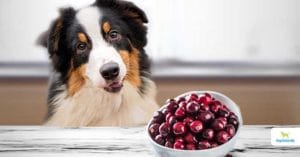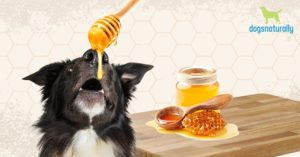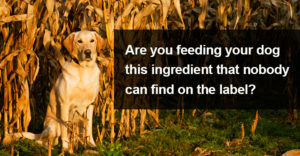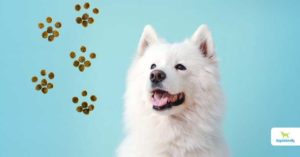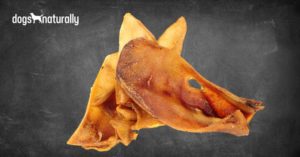Have you ever searched online for the best dog food to help your overweight dog with weight loss? You’ll find the who’s who of commercial dog foods. But will the food help your dog lose weight?
Probably not. What you’ll find is that the ingredients don’t differ much from the standard dog processed diet. Some are labelled low-fat … but (just like the human weight-loss industry) … they use extra carbs to replace fat.
Dog Food For Overweight Dogs
Your first stop for a diet for overweight dogs might be the pet store or your vet’s office. You’ll find a wide range of weight-loss, grain-free, and reduced-fat options, with questionable ingredients. Here are some of the ingredients used in weight-loss diets as fillers. And they also lack nutrients.
Powdered Cellulose
This is non-digestible plant fiber, often from wood pulp. It’s essentially sawdust … woody fiber without any nutritional value. Cellulose dilutes the number of calories in each serving. It also gives your dog the feeling of fullness. But you’ll notice the volume of poop also increases.
Beet Pulp
This is a high fiber by-product of the sugar beet industry. It’s considered an inexpensive filler. Some reports say it has health benefits. Still, its vitamins and minerals get removed for other purposes. All that remains is fiber that passes through your dog like any other fiber, despite its origin in a root vegetable.
Brewers Rice
This is the small grain fragments left over after whole grains of rice are milled. It’s an inexpensive grain filler without any nutritional value. It will bulk up your dog’s poop and make him feel fuller.
Chicken By-Product Meal
This is a dry rendered product known as slaughterhouse waste. This is what remains from slaughtered chicken. It’s usually anything but meat and includes feathers, fat, feet and beaks.
Soy Flour, Soy Grits, Soybean Mill Run
Soy is problematic for several reasons. Soy is a low-cost alternative to meat protein but can be highly allergenic. Most soy is also genetically modified and harvested using toxic glyphosate as a desiccant. Soy grits are left after the extraction and removal of oil and soy meat. Soybean Mill Run is the hulls after the soy meat is removed.
So … when there’s soy in a dog food, it artificially increases the protein content without adding meat. These soybean by-products are also inferior sources of amino acids. They are an unusable protein that your dog can’t digest.
You’ll also find grain-free foods that contain different legumes (also used as a low-cost source of protein), instead of grains. These are just as starchy as grains and should be avoided for your overweight dog.
Many ingredients in manufactured, weight-loss dog foods include grains, legumes and low-quality proteins. And you should also be aware of ingredient splitting. That’s when the same ingredient gets divided into sub-types and listed separately on the label. But added together, they’d usually be the largest ingredient (by weight).
Weight Control Dog Food Labels
Here are the top ingredients listed on a few random labels.
- Weight Glucose Management: Water, pork liver, whole grain corn, chicken, cracked pearled barley, powdered cellulose, chicken liver flavor …
- Weight Reduction: Whole grain corn, corn gluten meal, chicken by-product meal, powdered cellulose, soybean meal, soybean mill run, chicken liver flavor, dried beet pulp, pork liver flavor …
- Grain-free, Reduced Fat: Chicken meal, field peas, lentils, potato, tapioca …
- Reduced Fat, Grain-free: Deboned cod, turkey meal, salmon meal, lentils, yellow peas …
- Reduced Fat: Chicken, rice, whole grain corn, poultry by-product meal, corn germ meal …
With the exception of pork liver, deboned cod and chicken, the above ingredients offer little to no nutritional value. Those that aren’t stripped-down grains or fillers are carbohydrates your dog doesn’t need.
How Carbohydrates Cause Overweight Dogs
Processed diets are high in carbs and unhealthy fats, and low in protein …. and that leads to weight gain.
According to animal nutritionist Dr Richard S Patton PhD, dogs in the wild ate a diet that was 4% carbohydrate. They’d get some carbs from wild berries or the stomach contents of their prey. Yet today’s processed food often has 40% carbohydrates or more.
Most dogs need about 25–30 calories per pound per day to maintain a healthy weight. So, a 30-pound dog needs about 800 calories a day. And a lot of the calories in kibble are from carbs. So, if you reduce the kibble and feed a whole food, meat-based diet, you can feed your dog the same amount of calories … but he’ll get healthier foods and better nutrition. And it’ll be easier to control his weight.
Is My Dog Overweight?
So … how can you tell if your dog is overweight? The easiest way to tell is to see if you can feel his ribs. Holistic vet Dr Edward Bassingthwaighte offers this guideline: make a loose fist and run your other hand over your knuckles. That’s what your dog’s ribs should feel like. There shouldn’t be a layer of fat preventing you from feeling the ridges of his ribs. And he should have a defined waist that you can see from above and from the side. You should be able to see where your dog’s chest stops and his stomach area begins.
What To Feed Your Overweight Dog
Here are the most effective foods to help your dog lose weight.
Raw Diet
A whole food, raw meat diet is the best option for your dog. You can buy pre-made frozen raw food. Most should be complete and balanced, and some will contain fruits and vegetables. Higher quality foods won’t have added synthetic vitamins and minerals. Instead, the nutritients come from the ingredients.
Or you can follow recipes to prepare raw food meals yourself. Here are some tips to help your overweight dog …
- Stick to lean meats including turkey, chicken and beef
- Feed a balanced raw diet that includes muscle meat, organs and bones plus fruit, vegetables, eggs and fish. Otherwise, your dog will lack essential nutrients.
- Use fruits and vegetables from your dog’s meals to create healthy treats. You can freeze broccoli, green beans or carrots or small pieces of meat.
- Give raw meaty bones as treats or as an occasional meal replacement. Bones will keep your dog occupied for hours and satisfy his need for food. Give your dog knuckle bones, lamb femurs or pork or beef neck bones. They are healthier choices than commercial chews.
- Include omega-3 fatty acids to balance the omega-6 fats found in most dog food
- Include probiotics to balance the gut microbiome and help digestion and the immune system
DNM RECOMMENDS: Four Leaf Rover offers Protect, soil-based probiotics with bentonite clay, humic and fulvic acid, dandelion and burdock root powder. It’s rich in antioxidants and helps remove toxins. Buy Protect Now. >>
Low In Starch
Whether you feed your dog raw or home-cooked, leave out the starchy foods. Dogs have no nutritional requirement for starch to survive. A diet of protein and fat supplemented by some low-carb fruit and vegetables meets your dog’s energy needs.
A low-carb or low-starch diet includes raw meat or gently cooked meals without any carbohydrates in starch or grain form. Avoid legumes as well. These add starch to the diet … and plant-based protein doesn’t nourish your dog like the animal protein he needs. You can include low-carb vegetables (steamed or pureed for digestibility) like leafy greens (spinach, kale, dandelion greens), mushrooms, broccoli, zucchini, cauliflower or asparagus.
Freeze-Dried Raw Diet
Most freeze-dried diets have the same ingredients as pre-made raw frozen diets … muscle meat, organs and ground bones. Some will include fruits and vegetables. Like raw foods, the better options don’t have added synthetic vitamins and minerals.
Freeze-dried dog foods aren’t heated during the manufacturing process. Frozen food goes into large machines that lower the atmospheric pressure around the food. This removes moisture from the food. So, freeze-dried dog food isn’t cooked at all. But it’s very low in moisture, which gives it a long shelf life and makes it easy to store and serve.
What Can I Do If My Dog Is Overweight?
Besides feeding your dog a raw, home-cooked or freeze-dried diet with minimal carbs, here are some other things you can do to help your overweight dog lose weight.
1. Feed the Right Amount
The guideline for whole food, raw meat-based or home cooked diets is 2 to 3% of your dog’s ideal body weight at maturity. If your dog isn’t an active breed, feed on the low side; higher if he’s an active dog. If your dog is overweight, feed him based on what his healthy weight should be … not his actual weight. Start at 2% … then you can increase or decrease depending on whether he loses or gains weight.
If you do feed kibble, keep in mind that the recommended feeding amounts are usually too high. If your dog gains weight, cut back his portions.
2. Reduce Feedings … or Food Portions
You may have to experiment with this for your overweight dog. Some dogs will lose weight with just one meal a day. This mimics what would happen in nature, when dogs would only eat when they found food. And it gives your dog’s digestive system a healthy break between meals.
But you might need a different approach if your dog seems ravenously hungry all the time. Your dog might lose weight more easily if you split his daily food amounts into 2 or 3 feedings a day. If he doesn’t finish his food in 15 minutes, remove it for later. Don’t keep topping up the bowl. Of course, make sure your dog has water available all day.
3. Don’t Free Feed
Some dog owners free-feed. This is the practice of keeping the bowl full for your dog to eat at will. But you have no way of knowing how much he’s eating through the day, so it’s a bad idea for an overweight dog.
4. Feed Nutritious Food
Feed more protein and veggies, with no simple carbs … and only healthy fats. Supplement your dog’s existing food with add-ins like veggies, fruit, eggs, sardines. You can include non-starchy veggies like broccoli, green beans, celery, or asparagus. Include low-sugar blueberries, raspberries, blackberries or cranberries.
Is The Green Bean Diet Good For Dog Weight Loss?
This is a popular diet, but it’s not the best idea. Many vets recommend swapping a portion of your dog’s food for green beans. The problem is your dog is only getting limited nutrition from the beans, so you could be creating a nutrient deficiency. You can feed them as treats instead.
5. Add Foods with Healthy Fiber
Fiber gives your dog a feeling of fullness without the calories. But that doesn’t mean you need to give him cellulose or other fillers found in processed dog foods. Instead, give him healthy fiber. There are 2 types and your dog can have both.
Soluble fiber dissolves in water. It travels into the colon where fermentation by beneficial bacteria creates short chain fatty acids (SCFAs) that support your dog’s immune system. Soluble fiber can also help improve blood sugar levels to lower diabetes and obesity risk. Your dog can get soluble fiber from foods like fruit, mushrooms and seaweed.
Insoluble fiber is fiber that doesn’t get digested as it travels through the digestive system. It attracts water to the stool and bulks up food to help it pass through the colon. Your dog can have insoluble fiber found in plants and vegetables like broccoli, cauliflower and green beans.
RELATED: Read about the best sources of fiber for dogs ...
6. Increase Daily Exercise
Dogs can be victims of their owners’ sedentary lifestyles. Depending on age and health, most dogs need 30 minutes to 2 hours of physical activity every day. Even a walk around the neighborhood to sniff out the surroundings engages and benefits your dog physically and mentally.
7. Keep Track Of Treats
Your dog can easily gain weight by eating too many treats. It’s great to use treats for training or to reward your dog “just because” … but keep track of the treats for an overweight dog. You may need to remove some food from his meals. And try to use healthy treats like freeze dried or dehydrated meats or veggies, instead of cookies or other starchy treats.
The Dangers Of Having An Overweight Dog
In 2018, the Association for Pet Obesity Prevention estimated that 56% of dogs in the US were overweight or obese. Dog obesity is just as dangerous as obesity in humans. It reduces the lifespan and quality of life of your dog.
Here are some health issues that affect overweight dogs.
- Orthopedic disease
- Ligament rupture
- Tracheal collapse
- Arthritis
- Diabetes
- Urinary issues
- Heart disease
- Joint issues
- Pancreatitis
- Heart and lung diseases
- Cancer
- Skin problems
What Causes Dogs To Be Overweight?
There are several physiological reasons for weight gain:
- Aging – older dogs are less active and need less food, but owners continue to feed them the same amount from their younger days
- Breed – some breeds are prone to gain weight
- Neutering or spaying can lower your dog’s metabolism
- Lack of exercise
But the prime reason for overweight dogs is … overfeeding. One person controls what goes into the food bowl and that’s you. So it’s your responsibility to prevent weight gain by managing what your dog eats. It’s all too easy to feed dogs too much because it makes owners happy to see their dogs happy … when they’re eating.
But you can have a happy … and healthy dog … by feeding a diet with minimal carbs and starches and lots of fresh whole foods. And reward your dog with love, attention and exercise … not food.

